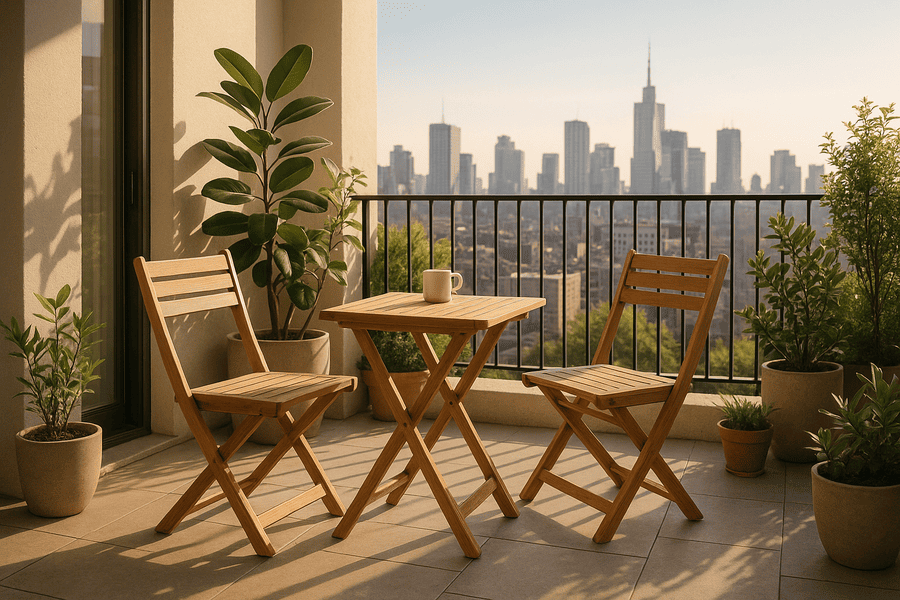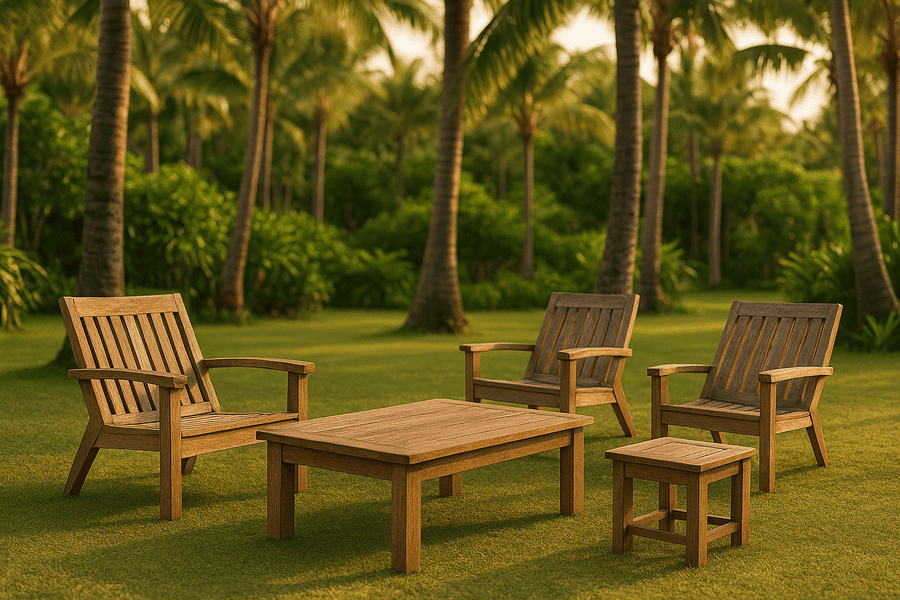
2025-01-30 11:13:44
Why Wooden Outdoor Furniture Is More Eco-Friendly Than Other Materials
Wooden outdoor furniture is more eco-friendly than materials like plastic or metal because it is made from natural, renewable resources. When sourced from certified sustainable forests, wood production has a significantly lower environmental impact compared to the energy-intensive processes required to produce metals or synthetic materials. Moreover, wooden furniture is biodegradable, meaning it breaks down naturally without polluting the environment. In contrast, plastic furniture contributes to long-term waste, and metal production often involves harmful emissions. Choosing wooden furniture supports sustainable practices and helps reduce reliance on non-renewable resources.
A study published by the Forest Stewardship Council (FSC) highlights that certified wood, such as FSC-certified wood, ensures sustainable and responsible forest management practices. Therefore, choosing wooden furniture not only supports an eco-conscious lifestyle but also helps preserve global ecosystems.
Sustainability of Wood as a Natural Resource
Wood is a renewable resource, especially when sourced from sustainably managed forests. Certifications like FSC ensure that wood is harvested with environmental sustainability in mind, including the protection of biodiversity and forest regeneration. Compared to petroleum-based plastic or energy-intensive metals, wood provides a more natural and sustainable solution.
Lower Carbon Footprint
The production of wooden furniture requires significantly less energy compared to plastic or metal. Additionally, during their growth, trees absorb carbon dioxide (CO?) from the atmosphere, helping offset carbon emissions. The simpler manufacturing process for wood also results in lower carbon emissions, making it a more environmentally friendly choice.

Biodegradability
Unlike plastic, which can take hundreds of years to decompose, wood naturally degrades without leaving long-term pollution. When wooden furniture reaches the end of its lifecycle, it decomposes into organic matter that is harmless to the environment, unlike plastic that continues to pollute soil and water.
Recyclable and Reusable Material
Wood is a material that can be easily recycled and repurposed. Old wooden furniture can be transformed into new products or used for DIY (Do It Yourself) projects. This reduces waste and extends the material's life span, making it more eco-friendly compared to materials like plastic and certain metals, which are harder to recycle.
Minimal Chemical Usage
The production of wooden furniture generally involves fewer chemicals compared to metals or plastics. Finishing treatments such as natural oils or water-based varnishes are more environmentally friendly than metal paints or plastic coatings containing harmful chemicals. Consequently, wooden furniture has a lower negative impact on the environment.
Durability and Longevity
High-quality wooden furniture boasts exceptional durability and can last for decades. This longevity reduces the need for frequent replacements, ultimately lowering resource consumption and waste production. The longer a product lasts, the smaller its overall environmental impact.
Renewable Production Practices
Many wooden furniture manufacturers adopt sustainable production practices, such as planting new trees for every tree harvested. This ensures the continuous availability of wood resources without disrupting the balance of ecosystems. For instance, FSC initiatives encourage reforestation to maintain a healthy natural cycle.
Healthier for Outdoor Environments
Wood does not release toxic fumes as some plastics or treated metals do. This makes it a safer choice for outdoor spaces, creating a natural and healthy ambiance. Additionally, wooden furniture reduces exposure to harmful chemicals that can contaminate the environment.

Cultural and Aesthetic Value
Wood has significant cultural and aesthetic value. The warm, natural feel of wooden furniture often connects users to nature, fostering environmental awareness. Its timeless beauty encourages care and preservation, reducing the likelihood of disposal and waste.
Comparison to Other Materials
Before choosing the right material for outdoor furniture, it is essential to understand the advantages and disadvantages of each material in terms of sustainability and performance.
- Plastic: While durable, plastic is non-biodegradable, requires high energy for production, and generates harmful chemical waste.
- Metal: Metal production involves energy-intensive mining and manufacturing processes that often harm the environment. Additionally, metals like iron are prone to rust in outdoor settings.
- Wood: Derived from renewable resources, wood has a low carbon footprint, is biodegradable, and involves energy-efficient production processes.
Wooden outdoor furniture is a more environmentally friendly option compared to plastic and metal. With benefits like resource sustainability, a low carbon footprint, biodegradability, and natural aesthetics, wood offers a solution aligned with environmental needs and modern lifestyles. Choosing certified wooden furniture, such as FSC-certified products, not only supports ecosystems but also ensures a greener, more sustainable future.
Recommendations for Teak Wood Furniture Stores
Make an eco-friendly choice for your outdoor spaces with wooden furniture that combines sustainability and style. Kusuma Furniture specializes in premium teak wood furniture, crafted from responsibly sourced materials to ensure minimal environmental impact. Durable, timeless, and renewable, teak wood is the ideal choice for eco-conscious homeowners. Choose Kusuma Furniture to bring sustainability and elegance to your outdoor living area!
Registered: Jl. Dr. Susanto No. 81 Pati, Indonesia.
Operational: Jl. Penjawi 459A Pati, Indonesia
Factory: Ds. Ngabul RT.2 / RW.7 Ngabul Jepara, Indonesia
Office Phone: (+62) 295 383411
Factory Phone: (+62) 291 4260088
Web: https://www.kusumafurniture.com/



